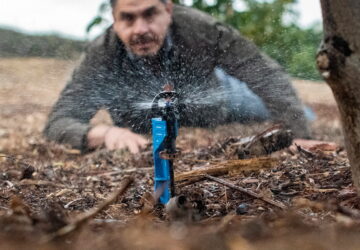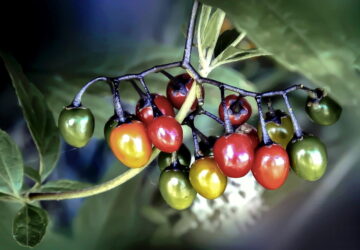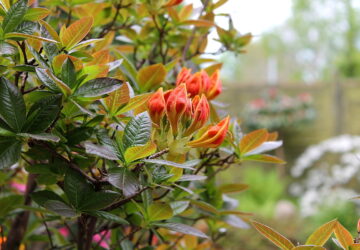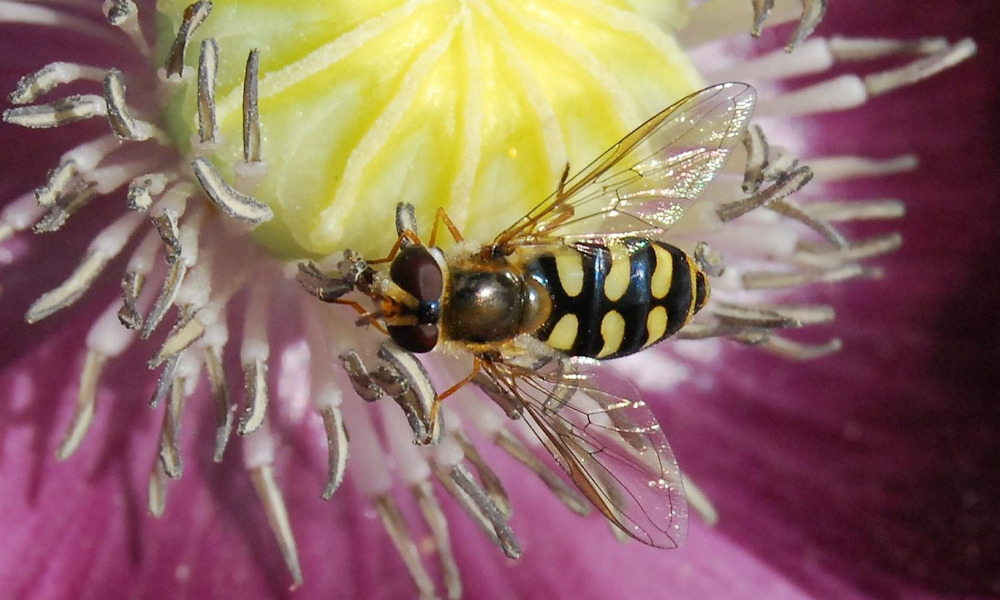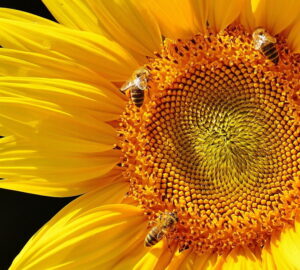Have you ever noticed the delicate yet determined insects hovering around your garden, mistaken for bees or wasps? Meet hover flies, the unsung heroes of your garden. In this article, we’ll unveil the remarkable attributes of hover flies and explore why they are an invaluable asset for every gardener, providing pollination, pest control and a thriving ecosystem.
Hover flies, also known as Syrphidae, are a family of beneficial insects that can greatly contribute to a healthy and thriving garden. They are typically small to medium-sized insects with slender bodies and colorful markings. They are excellent fliers and can hover in one place, hence their name.
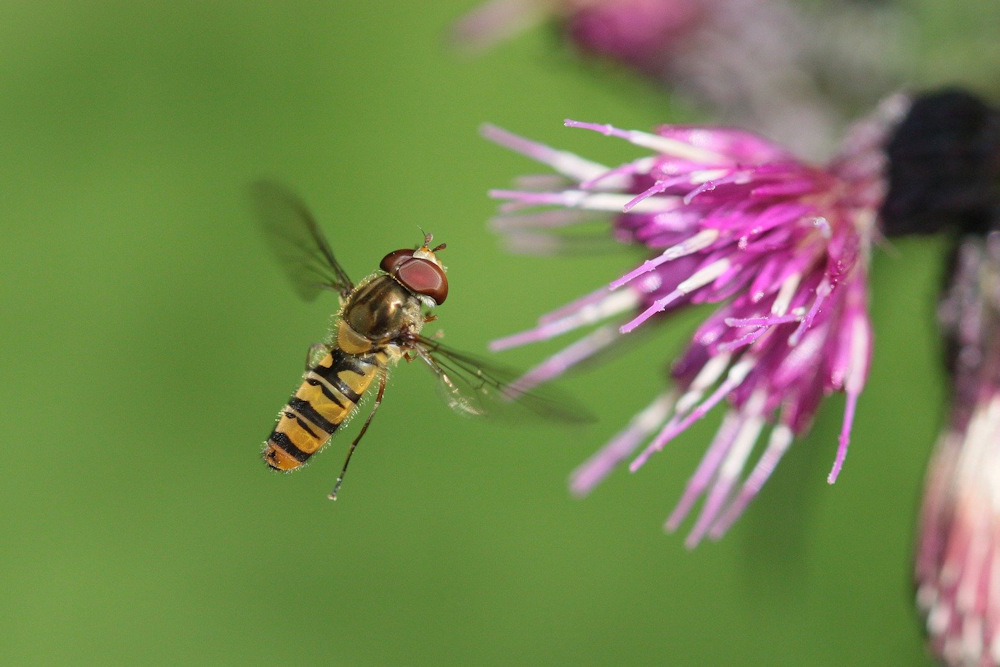
Often Mistaken for Other Insects
Hover flies are often mistaken for other insects due to their similar appearance and behavior. The two most common insects that are often confused with hover flies are bees and wasps.

Bees
Hover flies and bees share some common visual traits, such as a similar body shape and coloring. Both insects can have yellow and black markings on their bodies, which can lead to confusion. Additionally, hover flies have a remarkable ability to hover in mid-air, much like bees. However, there are a few key differences to look out for. Unlike bees, hover flies have only two wings, while bees have four. Hover flies also lack the dense hair covering that is typically seen on bees, and they have comparatively shorter antennae.
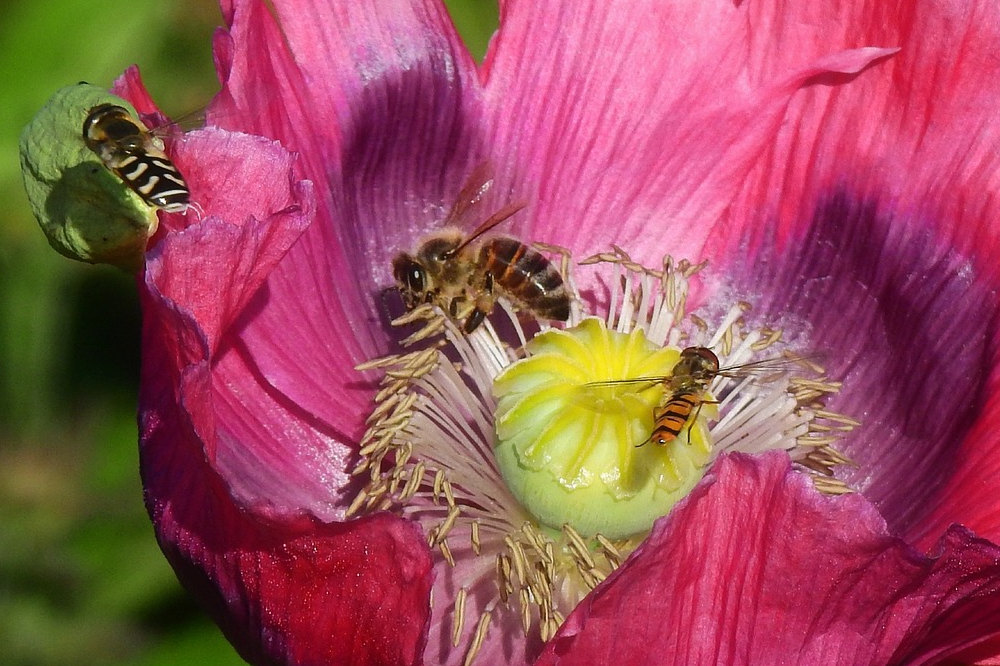
Wasps
Another group of insects often mistaken for hover flies are wasps. Both hover flies and wasps can have yellow and black markings, contributing to the confusion. However, there are notable distinctions between the two. Wasps have a slender waist and a more elongated body compared to hover flies. Wasps also have a distinct stinger, which hover flies lack. Additionally, hover flies have larger eyes, resembling those of a fly, while wasps have smaller eyes.
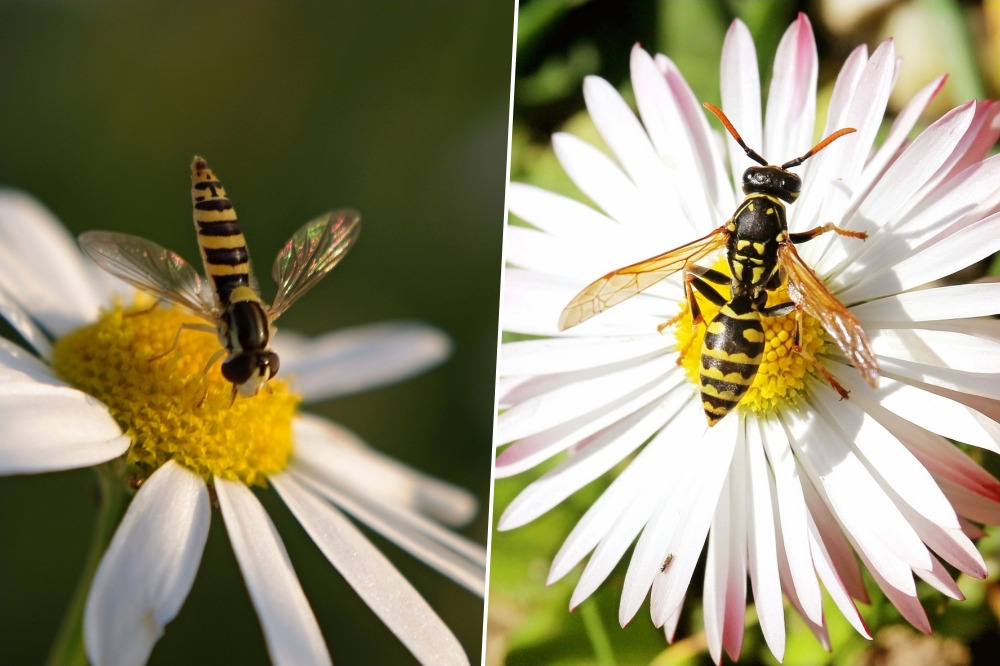
It’s important to note that while hover flies mimic the appearance of bees and wasps, they are harmless and do not possess stingers. Understanding these differences can help gardeners correctly identify hover flies and appreciate their beneficial presence in the garden.
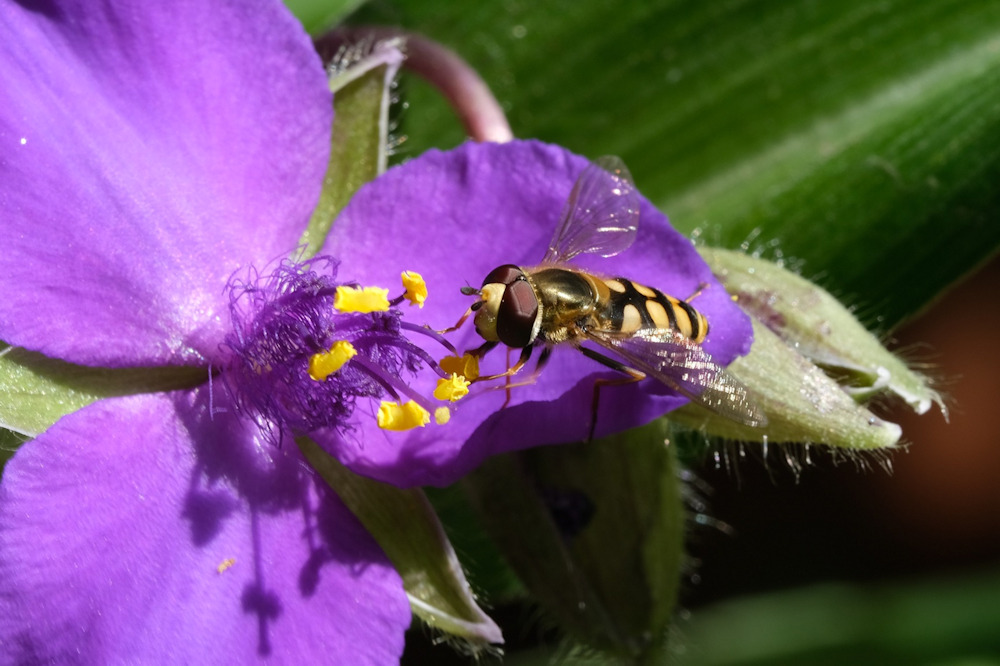
Benefits of Hover Flies in the Garden
Pollination
Hover flies are important pollinators. As they visit flowers in search of nectar and pollen, they unintentionally transfer pollen from one flower to another, facilitating the process of pollination. This helps in the reproduction and fruiting of various flowering plants in your garden.

Pest Control
Hover flies are voracious predators during their larval stage. The larvae, often referred to as “aphid lions” or “hover fly maggots,” feed on soft-bodied pests such as aphids, thrips and small caterpillars. They are especially effective at controlling aphid populations, which can be destructive to garden plants. By having hover flies in your garden, you can naturally reduce the need for chemical pesticides and maintain a balanced ecosystem.

Natural Enemies
Hover flies also act as a magnet for other beneficial insects. Their presence in the garden can attract other predators and parasitoids that prey on harmful pests. This can create a natural balance, keeping pest populations in check and reducing the need for synthetic insecticides.
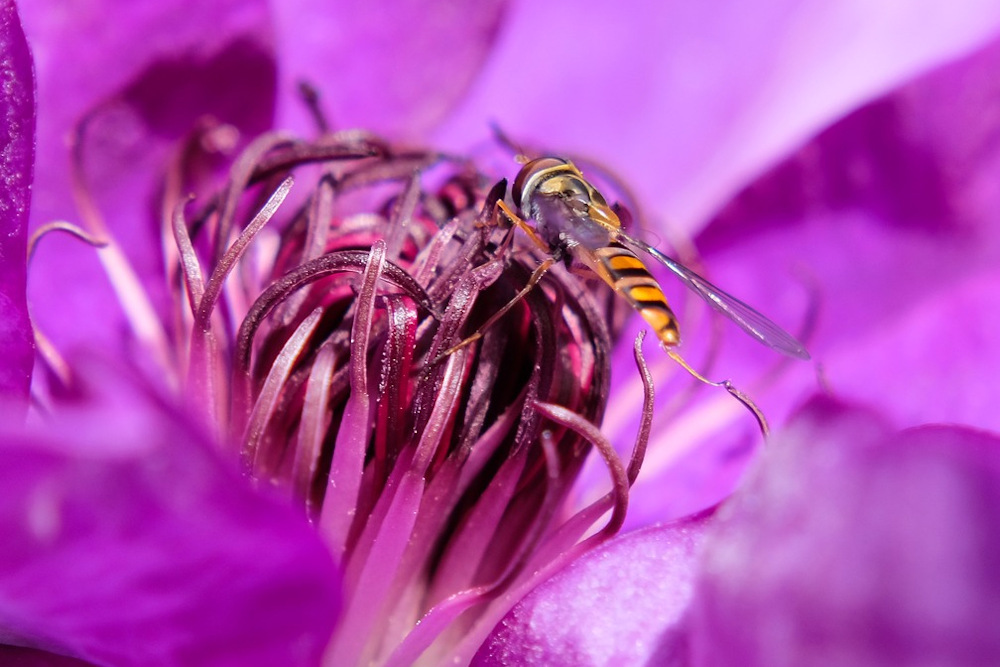
Plant Pollination Enhancement
Hover flies are known to be excellent pollinators for a variety of plants, including many fruits, vegetables and ornamental flowers. By attracting hover flies to your garden, you can enhance the pollination process and increase the yield of your crops or the beauty of your flowers.
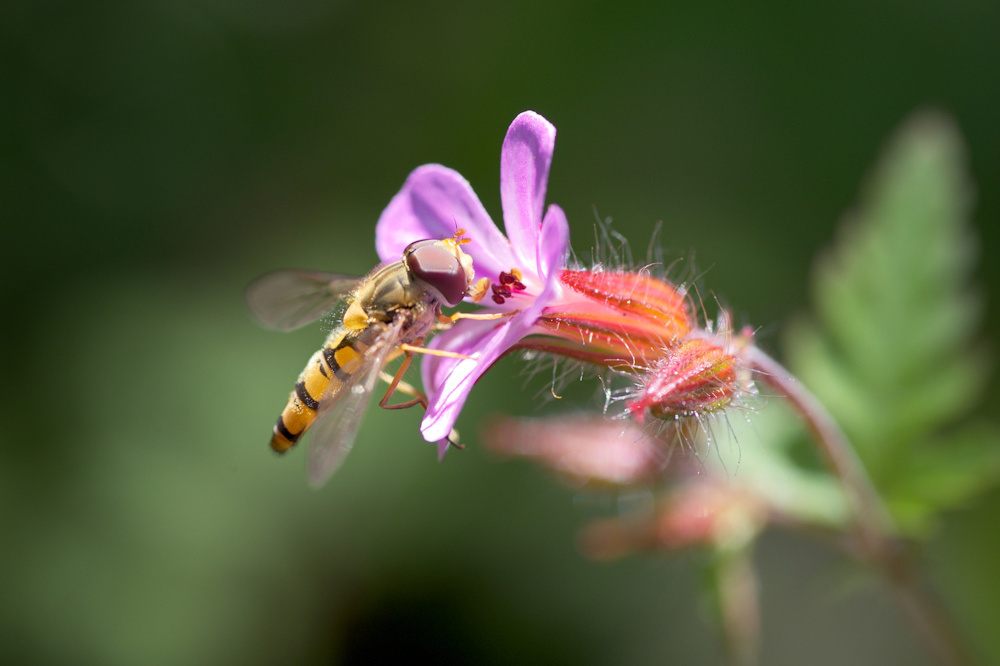
Easy to Attract
Hover flies are relatively easy to attract and accommodate in your garden. They are attracted to a diverse range of flowering plants, especially those with open, shallow blooms that provide easy access to nectar. Planting a variety of flowering species, particularly those with yellow or white flowers, can help attract and support hover flies throughout the growing season.
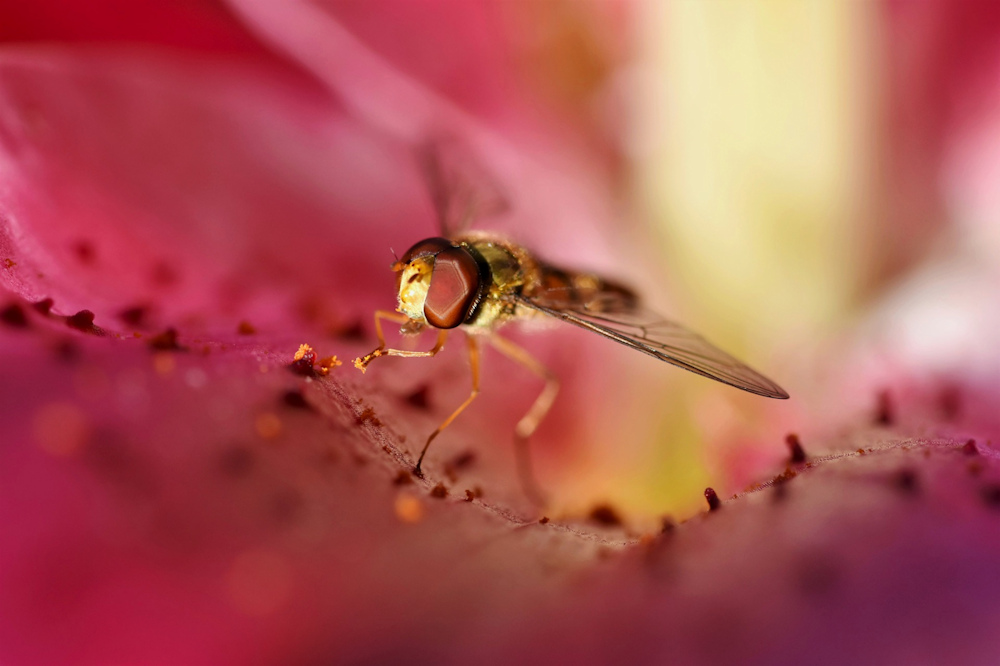
In conclusion, hover flies are beneficial insects that bring numerous advantages to your garden. They assist in pollination, act as natural pest controllers, attract other beneficial insects, enhance plant pollination and are easy to attract by providing suitable flowering plants. Encouraging hover flies in your garden helps create a sustainable and harmonious environment for both plants and beneficial insects, reducing the reliance on chemical interventions and promoting the overall health and productivity of your garden.
